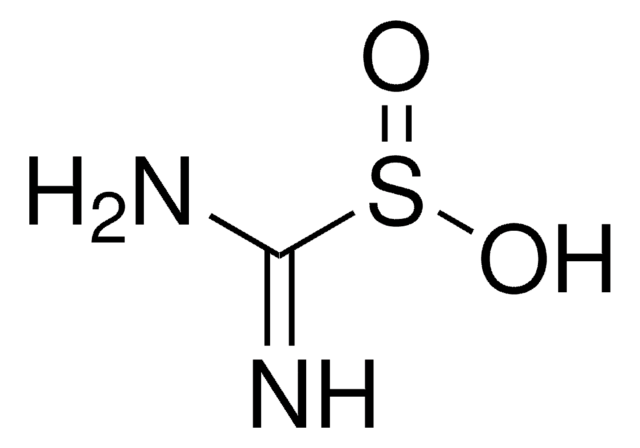Alle Fotos(1)
Wichtige Dokumente
103020
3-Hexanon
98%
Synonym(e):
Ethyl-propylketon
Anmeldenzur Ansicht organisationsspezifischer und vertraglich vereinbarter Preise
Alle Fotos(1)
About This Item
Lineare Formel:
CH3CH2CH2COC2H5
CAS-Nummer:
Molekulargewicht:
100.16
Beilstein:
1738025
EG-Nummer:
MDL-Nummer:
UNSPSC-Code:
12352100
PubChem Substanz-ID:
NACRES:
NA.22
Empfohlene Produkte
Assay
98%
Brechungsindex
n20/D 1.400 (lit.)
bp
123 °C (lit.)
Dichte
0.815 g/mL at 25 °C (lit.)
SMILES String
CCCC(=O)CC
InChI
1S/C6H12O/c1-3-5-6(7)4-2/h3-5H2,1-2H3
InChIKey
PFCHFHIRKBAQGU-UHFFFAOYSA-N
Suchen Sie nach ähnlichen Produkten? Aufrufen Leitfaden zum Produktvergleich
Allgemeine Beschreibung
3-Hexanone is a colorless to light yellow liquid. It elicits strong innate attraction in rodents. 3-Hexanone has anti-germinative activity against Clostridium Botulinum spores and cells. It also has potent anti-microbial properties.
Anwendung
3-Hexanone was used in a study to determine Henry′s law coefficients by combination of the equilibrium partitioning in closed systems technique in combination with solid-phase microextraction. It was used as test species in a study for quantitative determination of volatile organic compounds by chemical ionization reaction mass spectrometry. It was used to study the inhibitory activity of some aromatic and aliphatic ketones against Clostridium Botulinum spores and cells.
Signalwort
Danger
H-Sätze
Gefahreneinstufungen
Flam. Liq. 2
Lagerklassenschlüssel
3 - Flammable liquids
WGK
WGK 3
Flammpunkt (°F)
57.2 °F
Flammpunkt (°C)
14 °C
Persönliche Schutzausrüstung
Eyeshields, Faceshields, Gloves, type ABEK (EN14387) respirator filter
Hier finden Sie alle aktuellen Versionen:
Besitzen Sie dieses Produkt bereits?
In der Dokumentenbibliothek finden Sie die Dokumentation zu den Produkten, die Sie kürzlich erworben haben.
Steven D Johnson et al.
Proceedings. Biological sciences, 278(1716), 2303-2310 (2011-01-07)
To communicate with animals, plants use signals that are distinct from their surroundings. Animals generally learn to use these signals through associative conditioning; however, signals are most effective when they elicit innate behavioural responses. Many plant species have flowers specialized
Determination of Henry's law coefficients by combination of the equilibrium partitioning in closed systems and solid-phase microextraction techniques.
Dewulf J, et al.
Journal of Chromatography A, 830(2), 353-363 (1999)
Kevin P Wyche et al.
Rapid communications in mass spectrometry : RCM, 19(22), 3356-3362 (2005-10-20)
The technique of proton transfer reaction mass spectrometry (PTR-MS) couples a proton transfer reagent, usually H3O+, with a drift tube and mass spectrometer to determine concentrations of volatile organic compounds. Here we describe a first attempt to use chemical ionization
Antibotulinal properties of selected aromatic and aliphatic ketones.
Bowles BL and Miller AJ.
Journal of Food Protection, 56(9), 795-800 (1993)
Blas Agut et al.
The New phytologist, 207(3), 790-804 (2015-03-17)
The citrus rootstocks sour orange and Cleopatra mandarin display differential resistance against Tetranychus urticae. Sour orange plants support reduced oviposition, growth rates and damage compared with Cleopatra mandarin plants. Jasmonic acid signalling and flavonoid accumulation have been revealed as key
Unser Team von Wissenschaftlern verfügt über Erfahrung in allen Forschungsbereichen einschließlich Life Science, Materialwissenschaften, chemischer Synthese, Chromatographie, Analytik und vielen mehr..
Setzen Sie sich mit dem technischen Dienst in Verbindung.








